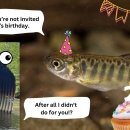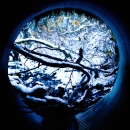States
AlaskaThis project will replace two barrier culverts located on tributary streams within the Deep Creek watershed near the Alaska Native Village of Ninilchik. Removal of these barriers will provide access to spawning and rearing habitat for pink, Coho and Chinook salmon as well as steelhead trout and Dolly Varden. The increased wetland connectivity resulting from this project provide a cold-water refuge for migrating salmon. Deep Creek is critical for salmon productivity in the Kenai Lowlands. It has been identified as a priority watershed and become a focus area for aquatic connectivity conservation. Replacing these culverts will increase both habitat and infrastructure resilience, providing the community with a safer road system and improved fishing access.
Project Quick Facts:
| Project Status | In Development |
| Location | AK, Kenai Peninsula Borough |
| NFPP Project Funding | $1,365,000 |
| Restoration Techniques | Culvert Replacement |
| Accomplishments | 4 Stream Miles Reopened, 300 Acres Reopened |
| Partner Project Lead | Kenai Peninsula Borough |
The National Fish Passage Program combines technical expertise with a track record of success.
Implemented primarily through the Service's Fish and Wildlife Conservation Offices, the National Fish Passage Program provides financial and technical assistance to partners across the country. Since 1999, the program has worked with over 2,000 local communities, Tribes, and private landowners to remove or bypass over 3,400 barriers to fish passage fish passage
Fish passage is the ability of fish or other aquatic species to move freely throughout their life to find food, reproduce, and complete their natural migration cycles. Millions of barriers to fish passage across the country are fragmenting habitat and leading to species declines. The U.S. Fish and Wildlife Service's National Fish Passage Program is working to reconnect watersheds to benefit both wildlife and people.
Learn more about fish passage and reopen access to over 61,000 miles of upstream habitat for fish and other animals. Staff have expertise in fish migration and biology as well as financial, engineering, and planning assistance to communities, Tribes, and landowners to help them remove barriers and restore rivers for the benefit both fish and people.
Fish passage project proposals can be initiated by any individual, organization, government, or agency. However, proposals must be submitted and completed in cooperation with a Fish and Wildlife Conservation Office. (Please note that fish passage projects being used for federal or state compensatory mitigation or required by existing federal or state regulatory programs are not eligible for funding through the National Fish Passage Program.)
CONTACT A FISH PASSAGE COORDINATOR IN YOUR AREA TO GET STARTED.



